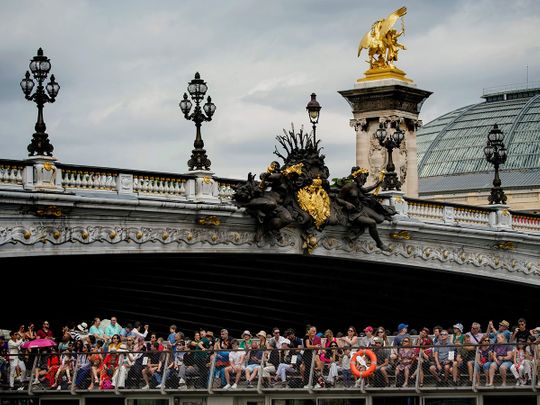Tourist crush in Europe is a real phenomenon, especially during the peak summer months. The summer tourist crush in Europe boils down to a combination of factors: pleasant weather (warm and sunny weather across most of Europe) perfect for outdoor activities, school breaks and holidays; and longer days (the continent experiences longer daylight hours in the summer), allowing tourists to pack more activities into their days.
Some of the most popular European tourist destinations that experience large crowds: Amsterdam, Barcelona, Dublin, London, Munich, Paris, Prague, Rome, Santorini and Venice.
How to avoid the Europe summer tourist crush
Travel agents suggest following:
- Book your accommodations and flights in advance: This will help you ensure that you get the best rates and availability.
- Consider visiting less popular destinations: There are many beautiful and interesting places to visit in Europe that are not as crowded as the major tourist hotspots.
- Try visiting during the shoulder seasons (spring and fall), which offer pleasant weather and smaller crowds.
- Be patient and respectful: Remember that you’re not the only one who wants to see these popular attractions. Be patient with other tourists and respectful of the local culture.
Early, high and late summer
Early Summer (June):
This shoulder month offers a good balance between decent weather and fewer crowds compared to July and August.
High Summer (July & August):
This is the peak of tourist season with the warmest weather and the most crowds. Be prepared for busy airports, train stations, and popular attractions.
Late Summer (September): Another shoulder month, September offers pleasant weather with fewer crowds and potentially lower travel costs.
Top 10 most popular cities for summer tourism:
Image Credit:
Barcelona, Spain:
This vibrant city is home to world-famous landmarks like Sagrada Familia and Park Güell, both designed by the famed architect Antoni Gaudí.
Image Credit: AP
Paris, France:
The City of Lights is a perennial favorite for tourists, with iconic attractions like the Eiffel Tower, the Louvre Museum, Seine River cruises, and Notre Dame Cathedral.
270 MILLION TRIPS
• July and August are the peak months for tourism in Europe.
• Summer travel is popular with both domestic European tourists and international travelers.
• Residents of the EU made over 270 million trips within the EU in July and August of 2018.
• In 2019, before the COVID-19 pandemic significantly impacted travel, Europe saw over 740 million inbound visitors.
There are no exact figures for this summer, though industry experts predict a strong summer for European tourism in 2024, potentially reaching record numbers due to pent-up demand and events, i.e. Olympic Games in France and the UEFA European Football Championship in Germany.
Image Credit: AP
Rome, Italy:
The Eternal City is packed with history and culture, from the Colosseum, and the Trevi Fountain to Vatican City.
Amsterdam, Netherlands:
This charming city is known for its canals, its liberal attitude, and its world-class museums like the Rijksmuseum and the Van Gogh Museum.
Image Credit: AFP
Venice, Italy:
This unique city, built on canals, is a must-see for any visitor to Italy. St. Mark’s Square (Piazza San Marco in Italian) is the main square of the city and a major tourist destination. However, Venice has been struggling with the effects of over-tourism in recent years.
Image Credit: AP
London, England:
The vibrant capital of England is a melting pot of cultures and history, with iconic landmarks like Buckingham Palace, Big Ben, and the Tower of London.
Image Credit:
Prague, Czech Republic:
This beautiful city is known for its well-preserved medieval architecture, including Prague Castle and the Charles Bridge.
Image Credit: Pexels | Anastasia Shuraeva
Munich, Germany:
The capital of Bavaria is a popular destination for beer lovers and history buffs alike. Munich is home to the Hofbräuhaus, one of the world’s most famous breweries, and the Marienplatz, the city’s central square.
Image Credit:
Santorini, Greece:
This picturesque island is known for its whitewashed houses, blue-domed churches, and stunning views of the Aegean Sea. However, Santorini has also been grappling with overtourism in recent years.
Image Credit:
Dublin, Ireland:
The capital of Ireland is a lively city with a rich history and culture. Dublin is home to the Guinness Storehouse, Trinity College, and St. Stephen’s Green.
Final note:
If you’re looking for good weather and outdoor activities, aim for the crowded June-to-August, period. If you want fewer crowds and potentially lower prices, consider “shoulder” seasons (April-May or September-October) with slightly cooler weather. The tourist volume also depends on specific destinations. Some regions in Europe, like the Mediterranean islands, might have slightly different peak seasons due to their unique climates.

